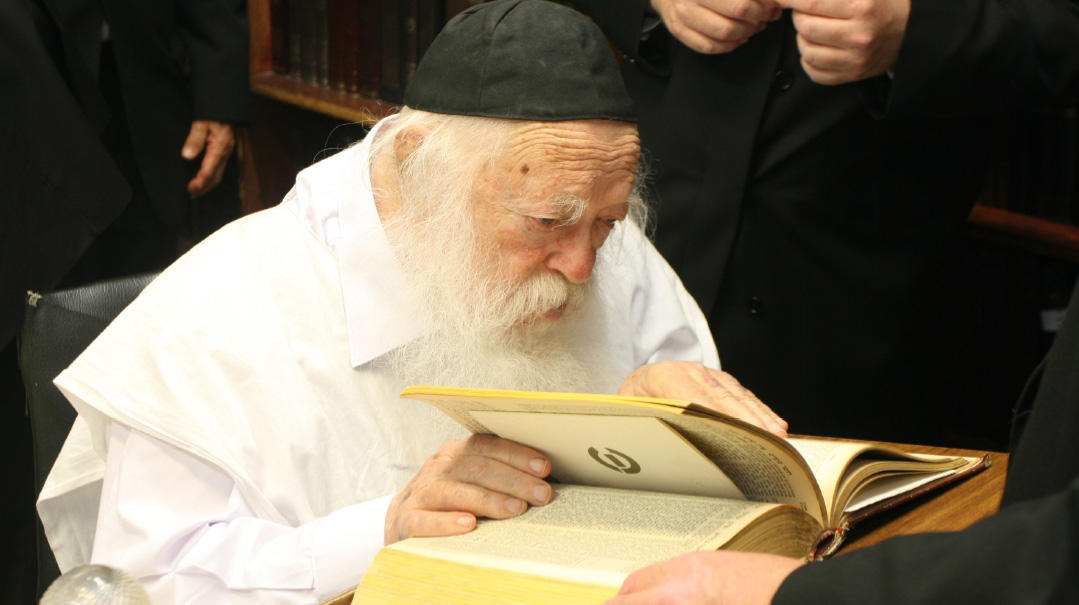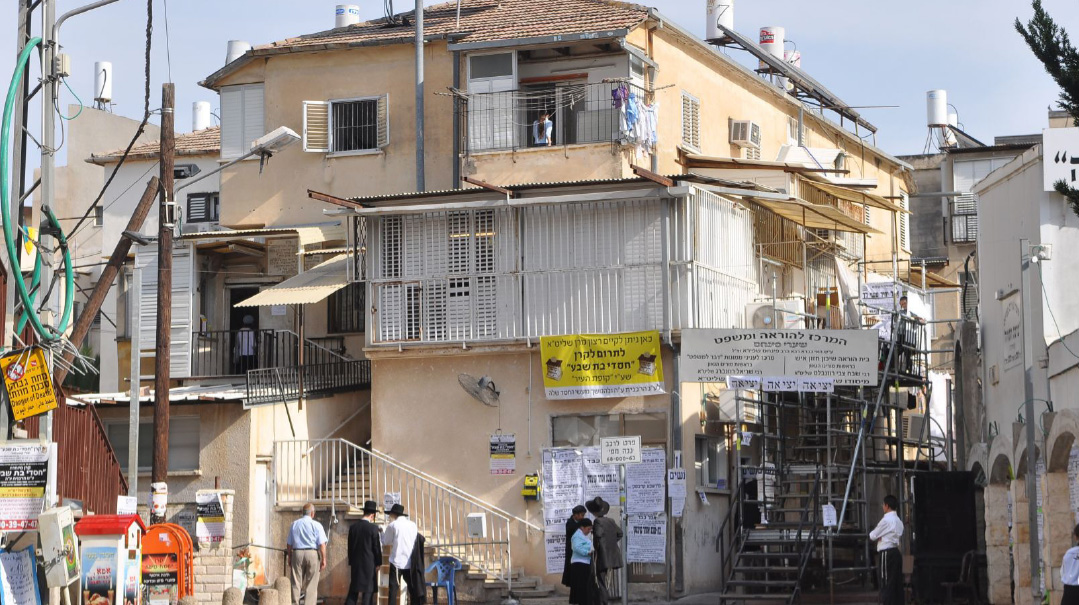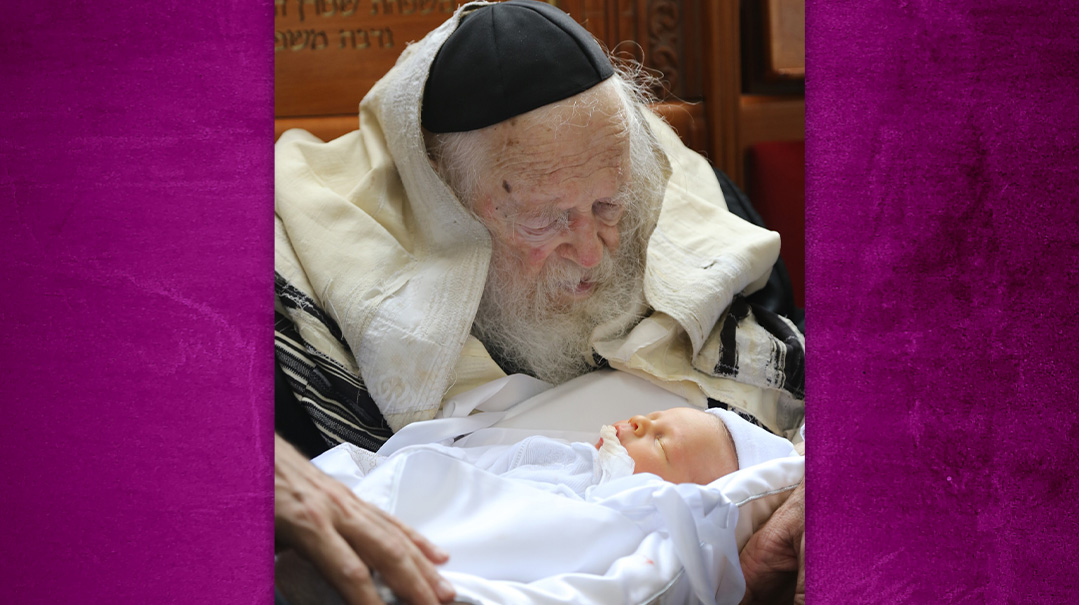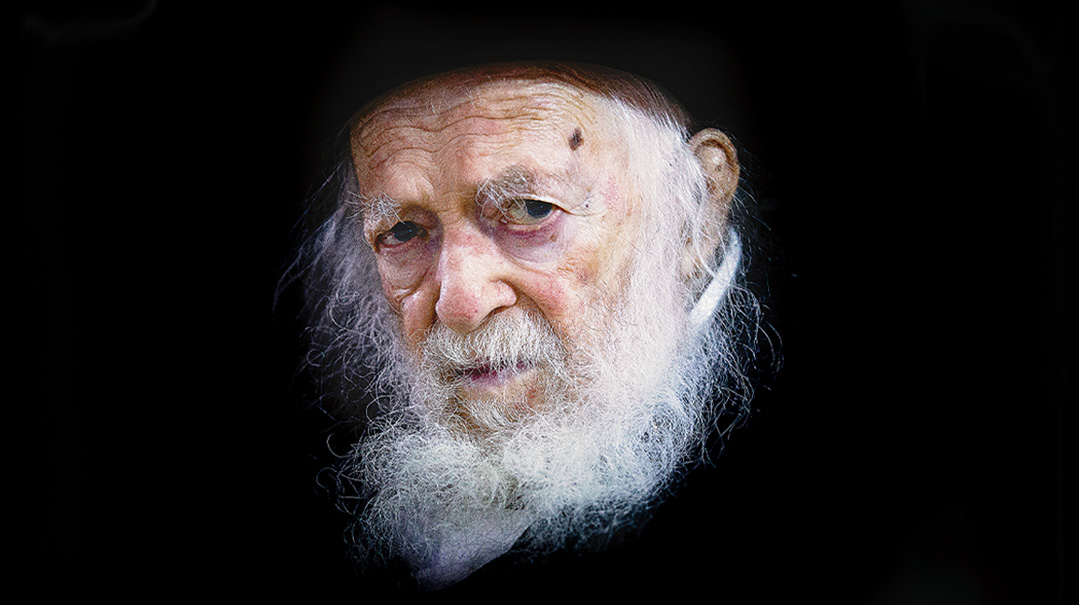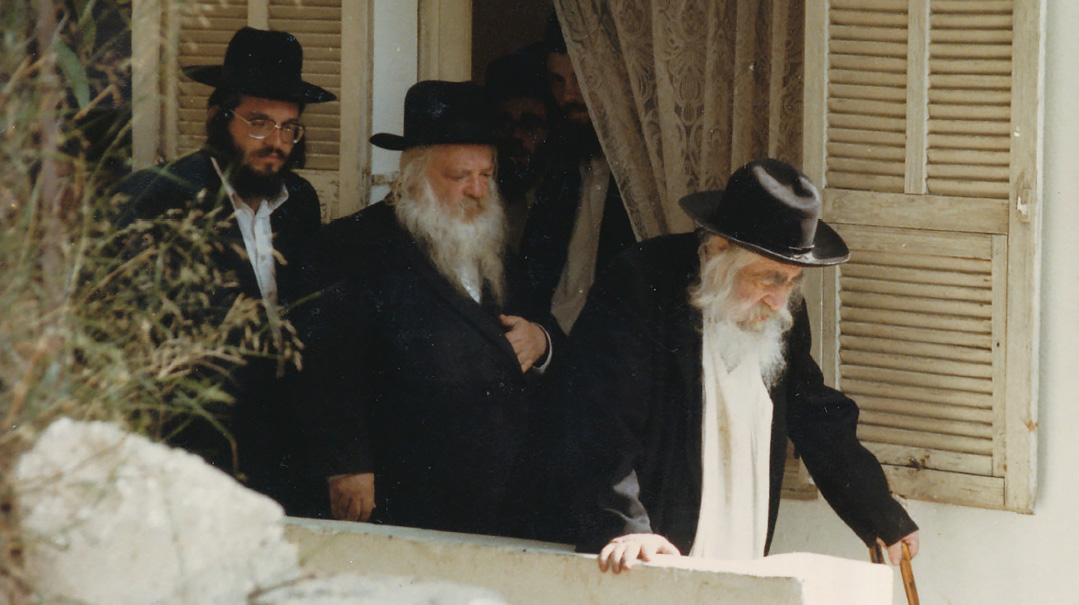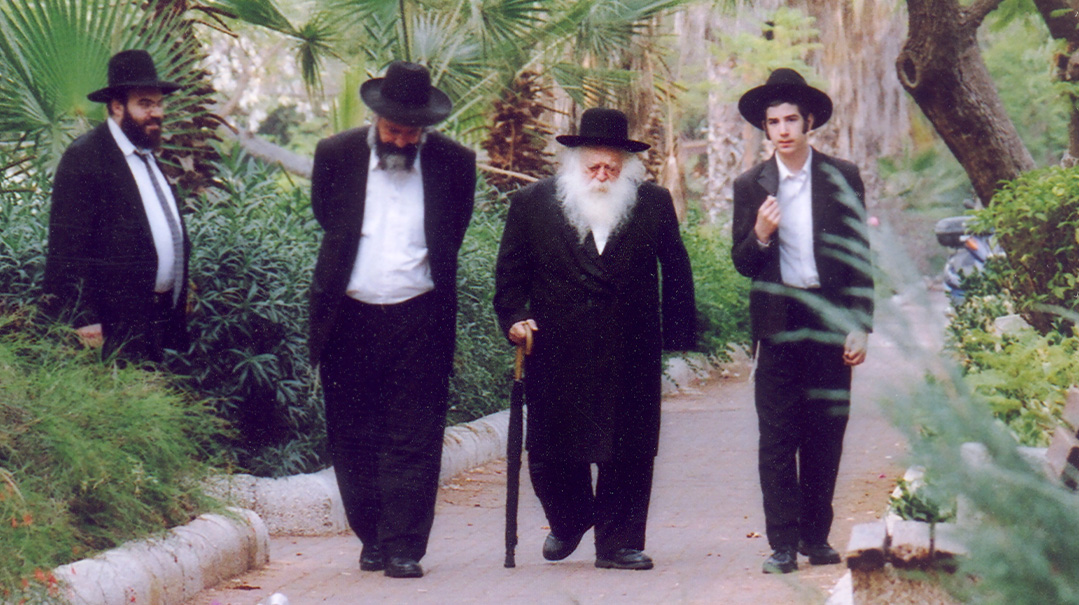The Neshamah of Klal Yisrael
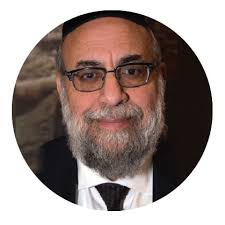
Now we mourn; we cry over our loss, for we have lost our very soul
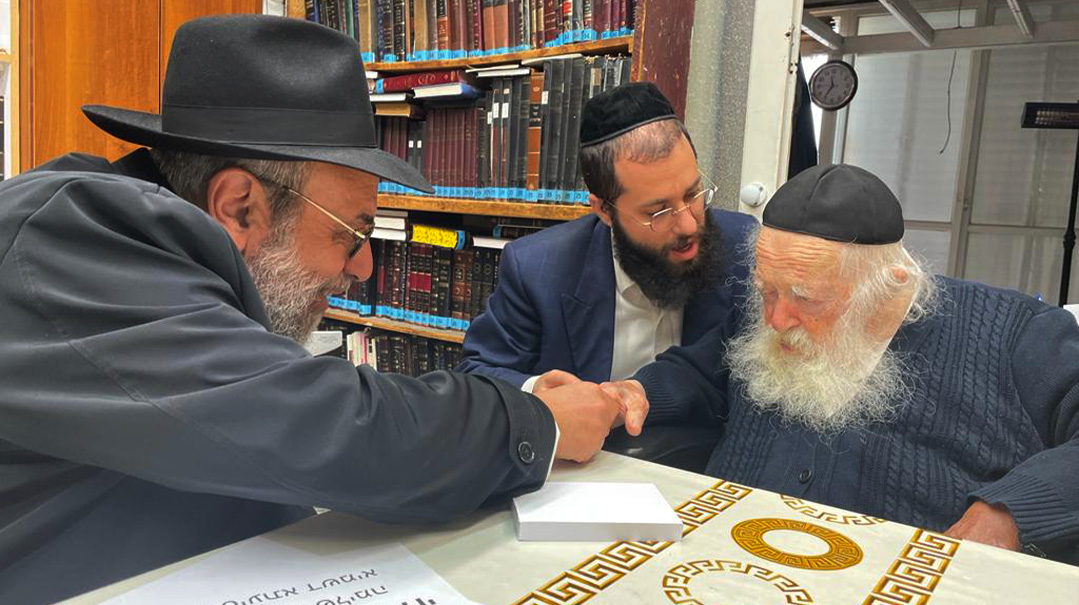
ITwas Erev Shabbos morning and I was in middle of preparing a shiur about Purim when I heard the bitter news. The calls, text messages, WhatsApp chats were all exploding with the question that no one wanted to answer. Is it true?
Maran Rav Chaim, the Sar HaTorah, was no longer with us.
I immediately switched gears and sent out a shul email announcing that the topic of the shiur had been changed to “Reflections on the Life of Rav Chaim Kanievsky ztz”l.” I went to my trusted old file cabinet of index cards and pulled out the sh’eilos that I’d asked Rav Chaim over the course of over 30 years and began to review his fascinating responses, trying to pick just a few to use for the shiur.
While we were all left with a terrible feeling of pain and loss, I really didn’t get it just yet. Even a little later, when I tore kri’ah along with so many other Yidden the world over, I still felt numb. It was early Shabbos morning, as I recited my daily Tehillim, that I finally felt it. Waves of overwhelming pain rolled over me.
It was then I understood. Klal Yisrael had lost its very neshamah.
Allow me to explain.
It was more than 45 years ago, when I was a bochur learning in a Yeshivas Chofetz Chaim in Yerushalayim. Rav Shmuel Niman ztz”l, a rebbi who was very dear to me, sent me a letter with a request and a shlichus. A young married woman who had suffered several late miscarriages was expecting again; she was extremely anxious that she would lose this pregnancy as well. A friend had told her about a particular mekubal who had achieved fame dispensing amulets that served as protection against miscarriages. She desperately wanted to get one as soon as possible, but she didn’t know anyone in Eretz Yisrael (in those days, traveling to Eretz Yisrael was not too common). My rebbi asked me to please be the shaliach to get hold of an amulet from the mekubal and send it back to America as soon as possible to alleviate her fear.
I was a young teenager who had only recently arrived in Eretz Yisrael myself. I didn’t know the language and I was unfamiliar with the modes of transportation available. Not only had I never heard of this mekubal, I’d never even heard of the city he lived in. I asked my rebbi, Rav Avrohom Kanarek ztz”l, whether I should take off time from yeshivah to try to fulfill this request, when I was at a loss as to how to even start.
Rav Kanarek told me that this sh’eilah needed to be presented to a posek. He recommended that I go to a certain Rav Elyashiv, who was a great posek, he told me, even though he was not so well known. (Until Rav Kanarek’s passing last year, I repeatedly expressed my hakaras hatov to him for that suggestion; that visit was the catalyst for a lifetime connection to the famed posek hador Rav Elyashiv ztz”l.)
When I presented my sh’eilah to Rav Elyashiv, he responded that there were definitely amulets that serve as protection from miscarriage. (It was only much later that I learned his own maternal grandfather was the Leshem, a famed mekubal.) However, since he had never met the individual dispensing this amulet, he could not advise me to go to him.
“But if you want a guaranteed segulah that is brought down in Chazal,” he added, “I have a suggestion for you. Go to Bnei Brak, where you will find a person who is a great tzaddik. Chazal tell us, ‘Tzaddik gozer v’HaKadosh Baruch Hu mekayeim’ — if a tzaddik says something will happen, then Hashem will fulfill his words. The Steipler Gaon is exactly the type of tzaddik Chazal are speaking about.”
Rav Elyashiv then proceeded to write me an introductory letter to the Steipler — at the time I didn’t know they were mechutanim — which I still have today.
I followed Rav Elyashiv’s instructions and traveled to Bnei Brak to ask the Steipler to daven and possibly send some words of chizuk to assuage this young woman’s anxiety. The Steipler was very welcoming to me, but told me that he was feeling unwell and suggested I go to his son Reb Chaim, who would help me. I began to protest — Rav Elyashiv had referred to him as the tzaddik Chazal are speaking of, not his son! — but the Steipler dismissed my words.
“There is no amulet in the world that is more powerful than the brachah that comes from my Chaim’l’s pure mouth and heart,” he insisted. “He is kulo tahor.”
I went as instructed — and I was hooked for life. What a zechus to sit in the same orbit as someone who was kulo tahor, kulo Torah, and whose renowned father vouched for the potency of his brachah!
Over the decades, for simchahs and for tragedies, Rav Chaim became the address we turned to for brachos, eitzos, and chizuk.
Several years ago I was experiencing a very serious and difficult challenge, and I didn’t know how to deal with it. So I got on a plane, went to Bnei Brak, and presented my concern to the Sar HaTorah. He immediately gave me a heartfelt brachah. I then asked him if there was something I should accept upon myself as a zechus to solve this problem. Rav Chaim suggested a daily schedule of a particular formula of Tehillim (which I have since shared with others, with Rav Chaim’s permission and approval) and baruch Hashem, the issue was resolved.
Except for the days when I was very ill with Covid and in the hospital, I have never missed a day of my Tehillim.
Each day before I begin reciting the Tehillim, I whisper a short tefillah that this recital should continue to serve as a zechus, and that this formulation was dictated by the Sar HaTorah, who should be zocheh to arichas yamim tovim v’shanim. On Shabbos morning, as I did every morning, I uttered these same words and then caught myself. I now needed to say the Sar HaTorah, zecher tzaddik livrachah.
The shattering news finally hit me. Rav Chaim was no longer among us.
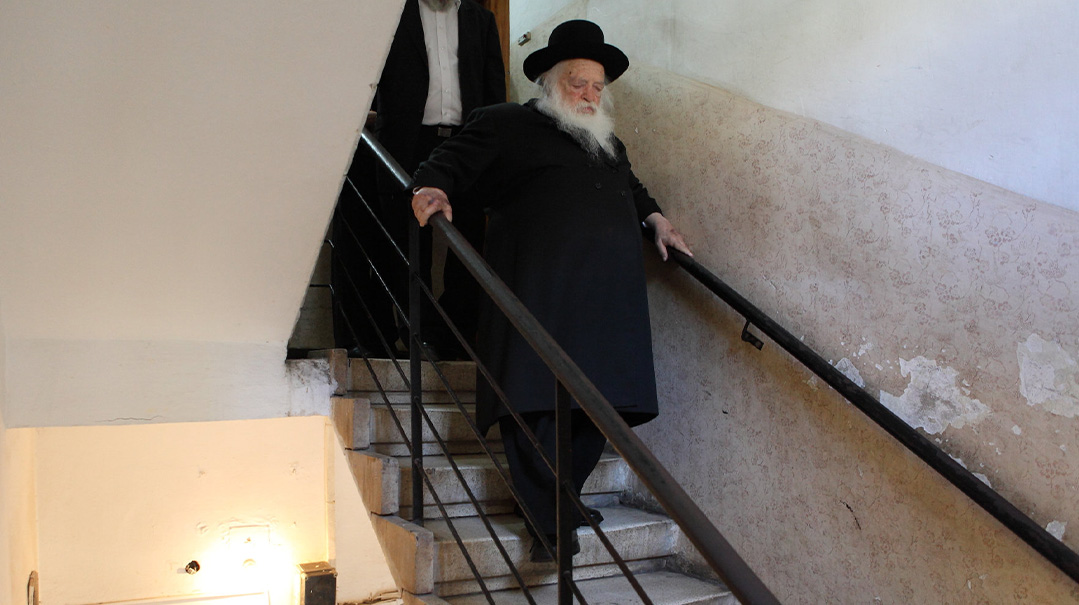
IT would be absolutely futile for me to try to explain Rav Chaim’s hasmadah or relate the extent of his vast knowledge of Torah; they are beyond my ability to grasp. But I would like to attempt to explain what I meant when I said he was the neshamah of Klal Yisrael.
Every person has a neshamah that is his or her connection to Shamayim. We all knew and felt that Rav Chaim’s neshamah was on a different plane than ours, and yet we felt connected through him. Over the years, the word spread that Rav Chaim’s brachos were special, and people began to stream to him, seeking his blessing — first just a trickle, then more and more, until, in the last number of years, all of Klal Yisrael found themselves at his humble door.
Rav Chaim became the address for all of Klal Yisrael’s trials and travails, because we wanted to connect to his elevated neshamah — and despite his lofty level, he made room for each and every one of us.
The Ran in his derashos writes that the Shechinah rests on the gedolei hador, just as it rested on the Beis Hamikdash itself. He explains that since Churban Habayis, the same level of Shechinah that existed in the Beis Hamikdash exists in each generation in the gedolei hador. With that, one can explain Chazal’s statement that “the passing of a talmid chacham is equal to the destruction of the Beis Hamikdash” — for the Shechinah that rested upon that gadol is no longer here.
There were occasions when I brought several people to Rav Chaim, each with very similar concerns, and he would tell each person to be mekabel something else. There was one issue about which I came to him twice, only weeks apart, yet on each occasion he recommended a different kabbalah. I asked him about this. Rav Chaim explained that when a thought entered his mind at the moment a person asked him a question, he felt that the answer must come from Shamayim and he therefore had a special siyata d’Shmaya to dispense the proper guidance for that person for that moment.
In light of the Ran, this is easily understandable. The Shechinah rested upon Rav Chaim.
Iam not sure exactly how it began — maybe because each time I returned from Rav Chaim I would give a special shiur sharing what I’d learned? — but over the last few years, I became an address for people requesting brachos from Rav Chaim. I would write down each name and request, and present my list several times a year. But eventually that became impractical; my lists had grown longer, and many bakashos were urgent. With the assistance of one of Rav Chaim’s dedicated grandsons, we started a different system.
Once a week (or more, if needed) I would call his grandson’s phone at a specially designated time when Rav Chaim was reciting his birchos hashachar as his grandson answered amen to his brachos. Then immediately afterwards — a time Rav Chaim felt was a special eis ratzon — I would read each and every name slowly. His grandson would repeat them, and Rav Chaim would give each one their respective brachos. So many people saw yeshuos in these blessings — and perhaps even more importantly, so many Yidden received indescribable chizuk.
Yes, Rav Chaim was indeed the Sar HaTorah, the undisputed prince of Torah. And yes, he knew kol haTorah kulah. But for the majority of Klal Yisrael, for the simple Yid battling so many difficult challenges, Rav Chaim was the very soul of Klal Yisrael.
With his petirah, we are left bereft and broken. We are frightened. So where do we go from here?
Now we mourn; we cry over our loss, for we have lost our very soul.
But then we must get up, brush off our clothes, and prepare our musical instruments to welcome Rav Chaim back into our midst, as we pray that he soon escort Mashiach Tzidkeinu to bring all of us home. This time for good.
This article is dedicated l’zecher nishmas Sarah Chaya z”l bas Rav Chaim Aryeh Zev
(Originally featured in Mishpacha, Issue 904)
Oops! We could not locate your form.

